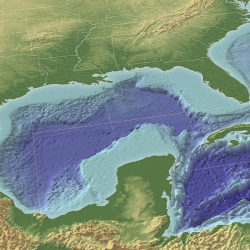Source Institutions
Source Institutions
Add to list Go to activity
Activity link broken? See if it's at the internet archive

In this environmental science and data analysis activity, learners work in groups to track a Dead Zone (decreased dissolved oxygen content of a body of water) using water quality data from the Nutrient Enhanced Coastal Ocean Productivity (NECOP) Program. Learners use the dissolved oxygen data to construct a graph illustrating the "dead zone" in the Gulf of Mexico, practice data manipulation using Microsoft Excel (or graph paper), and recommend solutions for hypoxia, threatening marine life. This resource includes two links to optional follow up activities.
- 5 to 10 minutes
- 1 to 2 hours
- free per student
- Ages 14 - 18
- Activity, Lesson/Lesson Plan
- English
Quick Guide
Materials List (per student)
- Computer with Excel and Internet Access
- Graphing paper (optional)
- Pen or pencil (optional)
Subjects
-
Earth and Space Science
-
Earth Processes
- Weather and Climate
-
Earth Structure
- Oceans and Water
- Atmosphere
-
Earth Processes
-
Engineering and Technology
-
Engineering
- Ocean Engineering
-
Engineering
-
Life Sciences
- Cells
-
Ecology
- Ecosystems
- Populations
- Energy Flow and Chemical Cycles
- Biodiversity
- Human Impact
-
Physical Sciences
-
Heat and Thermodynamics
- Heat and Temperature
-
Chemistry
- Oxidation-Reduction Reactions
- Solutions
-
Structure and Properties of Matter
- Elements and Periodic Table
-
Heat and Thermodynamics
-
Mathematics
-
Data Analysis and Probability
- Data Analysis
- Data Collection
- Data Representation
- Number and Operations
- Representation
-
Data Analysis and Probability
-
The Nature of Science
-
Science and Society
- Risks and Benefits
- Public Policy
- Ethics
-
The Scientific Process
- Gathering Data
- Formulating Explanations
- Communicating Results
-
Science and Society
-
The Nature of Technology
-
Technology and Society
- Impacts of Technology
- Technology and the Environment
-
Technology and Society
Informal Categories
- Animals
- Nature and Environment
Audience
To use this activity, learners need to:
- see
- read
- use keyboard
- use mouse
- touch
Learning styles supported:
- Involves teamwork and communication skills
- Uses STEM to solve real-world problems
- Involves hands-on or lab activities
Other
Components that are part of this resource:
Includes alignment to state and/or national standards:
This resource is part of:
Access Rights:
- Free access
By:
- Rose, Laura
Rights:
- All rights reserved, Virginia Sea Grant Marine Advisory Program,
Funding Sources:
- NOAA Sea Grant
- National Marine Educators Association
